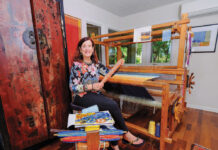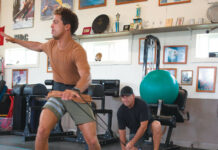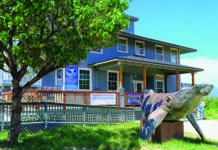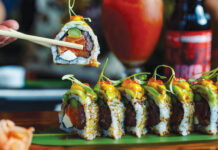Makawao Through the Ages
By Serene Gunnison
If you were to travel back in time to the Makawao of the 1930s, you might notice parallels to the Makawao of today. Many of the building facades on Baldwin Avenue, Makawao’s main drag, remain unchanged – save for new paint jobs and updated signage. Families of wild chickens still strut through town.
The former Yoshizu Fish Market, now Rodeo General Store, is still the go-to for Makawao residents to buy vegetables and other grocery essentials. And although Komoda Store is no longer a popular hangout for drinking coffee and talking story, it has grown into one of Maui’s most beloved bakeries and remains a Makawao focal point.
Makawao began to emerge as Upcountry’s social and business center in the late 1800s, as ranching operations and sugar plantations opened in the area. By the 1930s, Makawao was a full-fledged township, home to billiard parlors, a movie theater, two service stations, general stores and a diverse population. Most non-Hawaiian residents during this time hailed from Portugal, Asia, the Philippines and Spain, making Makawao a model Hawaiian melting pot.
World War II brought a flood of troops to Makawao. Tam Chow Store – now Casanova Italian Restaurant – was converted into Crossroads USO, and provided recreation for the thousands of service members that lived and trained down the road at Camp Maui. Post-war, Makawao became a desolate place. Job opportunities pulled people to Central Maui, but Makawao’s paniolo (cowboys) remained.
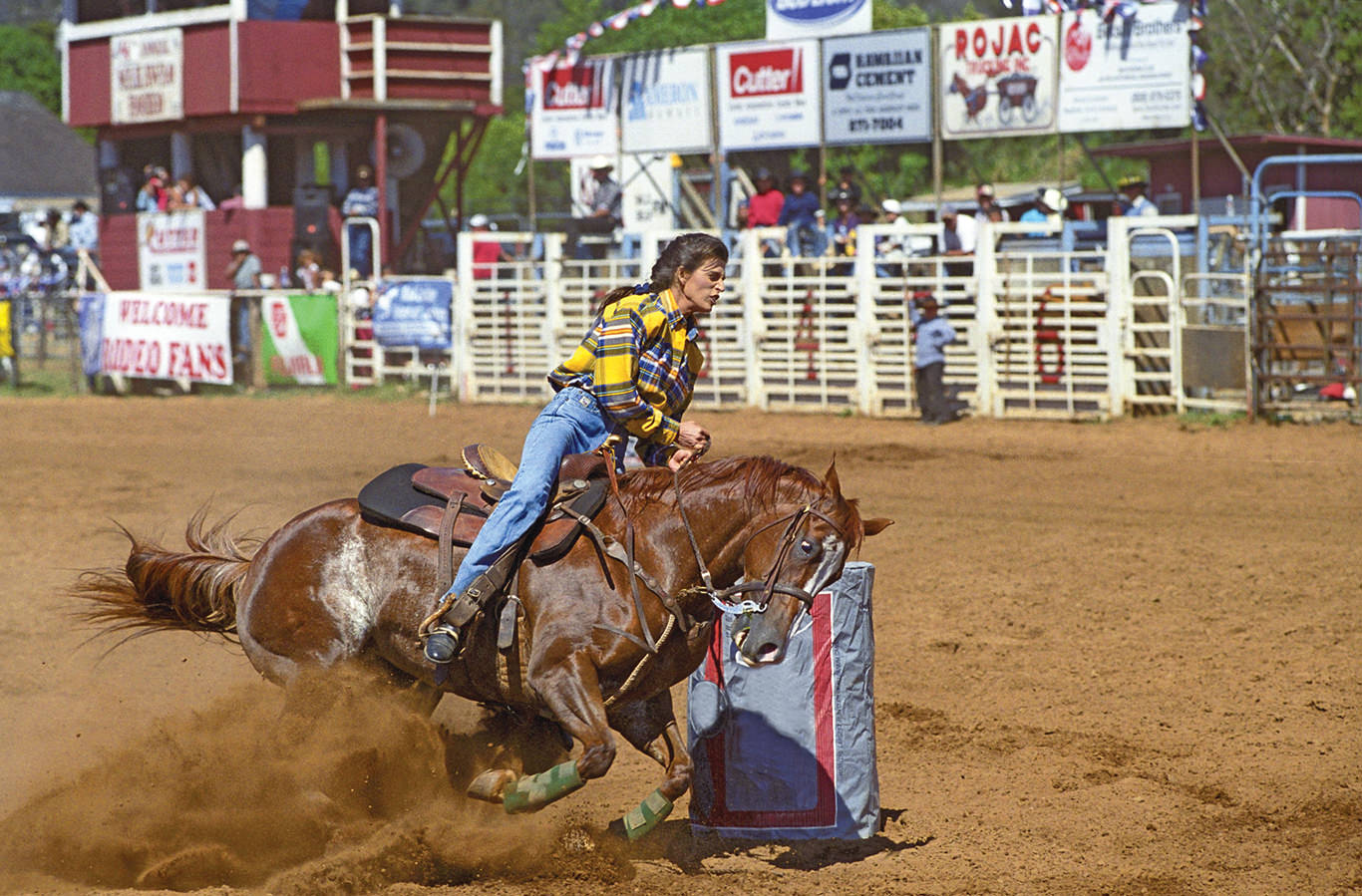
Surrounded by sprawling ranch lands, Makawao has long been known as a paniolo town. (For perspective, paniolos were wrangling cattle on the slopes of Haleakalā while most of the Midwest was still being settled – the first Upcountry ranch was established in 1845).
But Makawao’s legacy as a cowboy hub was cemented in 1955, when Kaonoulu Ranch manager Harold “Oskie” Rice founded the Maui Roping Club and the esteemed Makawao Rodeo a year later. The Makawao Rodeo – now called the Makawao Stampede – still takes place every July and is the largest rodeo competition in the state. The rodeo is preceded by a parade through town, honoring the Upcountry community.
Makawao remained a sleepy paniolo town until the 1970s, when a renewed interest in rural living drew residents back to the area. Modern Makawao began to take shape as newcomers flocked to the town, opening restaurants and art galleries.
The Makawao of today blends new age with country spirit – an amalgamation that might typically mix like oil and water. But this combination gives Makawao its distinct flavor. After all, where else on Maui can you find old hitching posts alongside Chinese herb shops?
The Makawao Rodeo has been a tradition since 1956. Now called the Makawao Stampede, this year’s event is June 30-July 2 at Oskie Rice Arena. The Makawao Parade is June 24.
Pollinator Paradise
By Ashley Probst
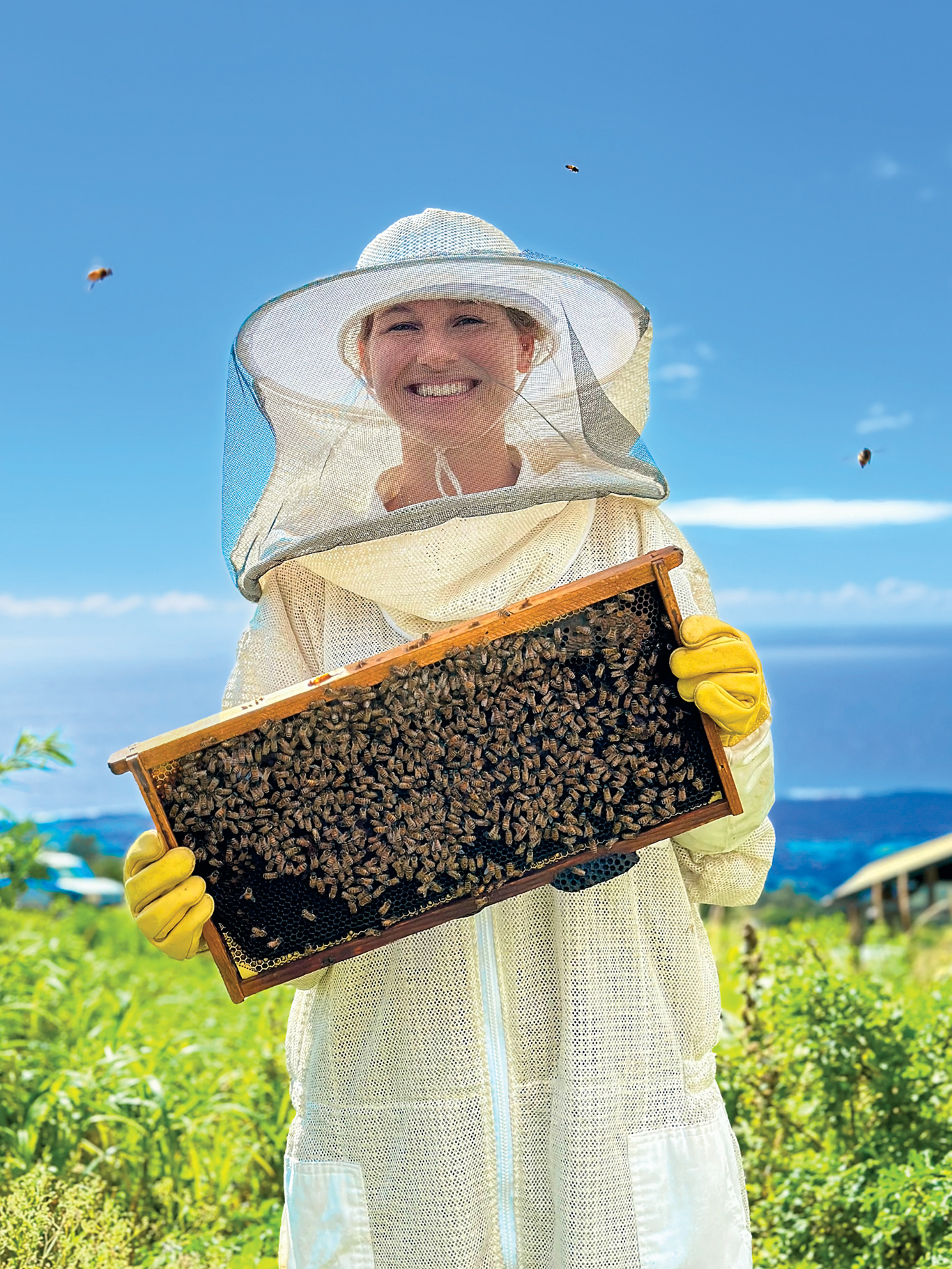
Things are abuzz at Maui Honey Bee Sanctuary in Kanaio, a small community a few miles south of Ulupalakua. This off-grid organic farm overlooks the Pacific Ocean and Maui’s lava fields from the western slopes of Haleakala. It is on this expansive property that owner Erica Erickson lives and works as a beekeeper, educator and artisan.
“Maui – and Hawai‘i, in general – is an amazing place to keep bees. It’s one of the more ethical places to get honey from because they’re producing all the time,” said Erickson, who has been passionate about ethical and organic beekeeping methods since starting her Upcountry operation in 2015.
Another major part of Erickson’s mission is providing education about bees, especially for children. She hopes this will inspire them to become beekeepers themselves. “They are the future, so they’re gonna have the most impact on the world,” she said.
This education also extends to volunteers who work for the farm and, in exchange, receive housing and hands-on beekeeping experience.
For everyone working at Maui Honey Bee Sanctuary, a typical day includes opening the roadside farm stand; hosting educational tours; maintaining eight on-property beehives; and making artisanal beeswax products like lotions, lip balms, food wraps, and candles. Erickson also offers workshops to teach others how to make these all-natural goodies.
In addition to working on her own property, Erickson manages hives for other local farms on Maui and Hawai‘i Island. This has allowed her to curate a collection of varietal honeys like kiawe, lavender, macadamia nut, ‘ōhi‘a lehua, and more.
“The honey I produce on my property is called Liquid Gold honey. It’s essentially a wildflower honey, but it’s precious to me, so it’s like gold,” Erickson said. She also makes specialty infusions with the likes of homegrown Hawaiian chili pepper as well as cacao, which she calls honey fudge. Visitors are welcome to stop by for a free tasting.
All of Erickson’s creations are sold at the on-property farm stand as well as Da Beehive in Pā’ia, which she also owns and operates. Pop in and you may be lucky enough to chat with Erickson and meet her dog, Franklin, who serves as the company mascot – and visitors often point out that he is, serendipitously, the color of honey.
Maui Honey Bee Sanctuary in Kanaio is open 10:30 a.m.-6:30 p.m., and Da Beehive in Pā’ia is open 10:30 a.m.-6:30 p.m. every day. @mauihoneybees
Turning Into Art
By Cynthia Sweeney
Victor Holmes and Sandra Bailey have been creating hand-turned works of art for more than 20 years out of their studio in Makawao. Inspired by the beauty and variety of Hawaiian trees, their story is rooted, one might say, in a love of nature. It’s not often one finds a husband and wife, both artists and that work in the same medium.
Bailey says when she first moved to Maui, she was awed by “all the beautiful wood,” and a desire was sparked to get into woodworking. Then, “When we decided to get a lathe, it was like a dream come true.” Holmes was the first to try his hand at turning wood, with Bailey helping by sharpening tools, and soon beginning to apprentice.
After learning to turn traditional bowls, vases and calabashes, Bailey and Holmes ventured “off the beaten path,” creating wood sculptures that are sometimes abstract in nature, more art than utilitarian. “Each piece of wood has its own essence and tells us what it wants to be,” Bailey said. The duo finds inspiration in nature, on walks with their dogs in the mountains, and in the ocean; Bailey is also an amateur free diver, and Holmes is a surfer.
While each has its own separate style of wood-turning, they also collaborate on many pieces. Bailey will sometimes add color to Holmes’ works with resin inlays and paint, and they also incorporate natural elements like pine cones. The wood they use for their artwork comes strictly from trees that have already been downed. “I call it tree-cycling,” Bailey said. “It’s wood that probably otherwise would have gone for green waste.” Their studio is also made from recycled material.
Their work is displayed and sold at the Four Seasons Resort Maui at Wailea, and they also see people by appointment at their studio. They frequently ship pieces around the world to people who visit from places as far away as Saudi Arabia and India.
“When people come here they are looking for something to take home, to remind them of Hawai‘i and their experience,” Bailey said. “It’s especially satisfying when a piece finds its person when someone really has a connection to your work and enjoys it. That’s why we do what we do, to spread some beauty into the world, and a reminder of Maui.’ ”
Find their work at instagram.com/turningintoart.
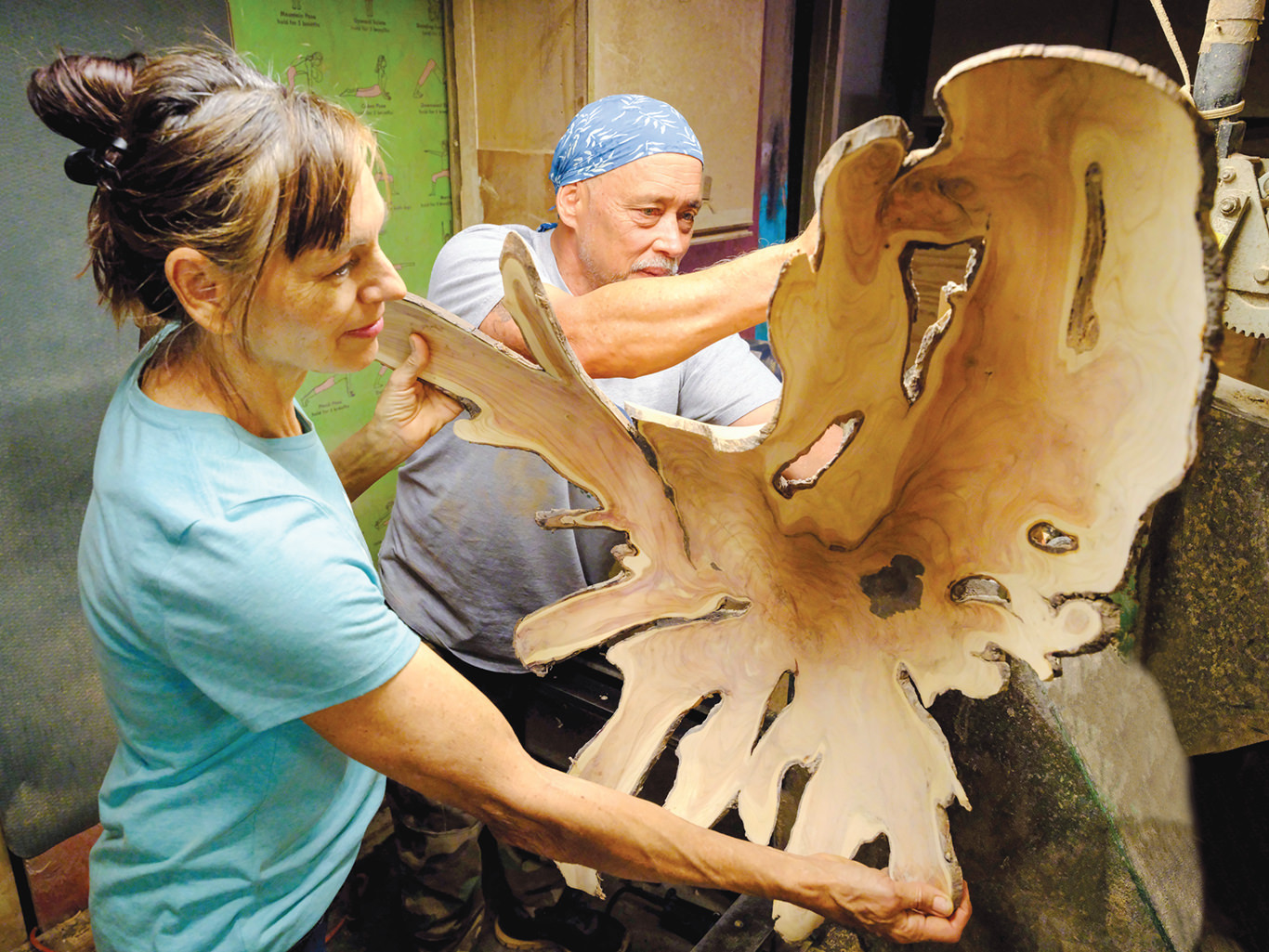
Click here to subscribe to Maui Nō Ka ‘Oi Magazine

